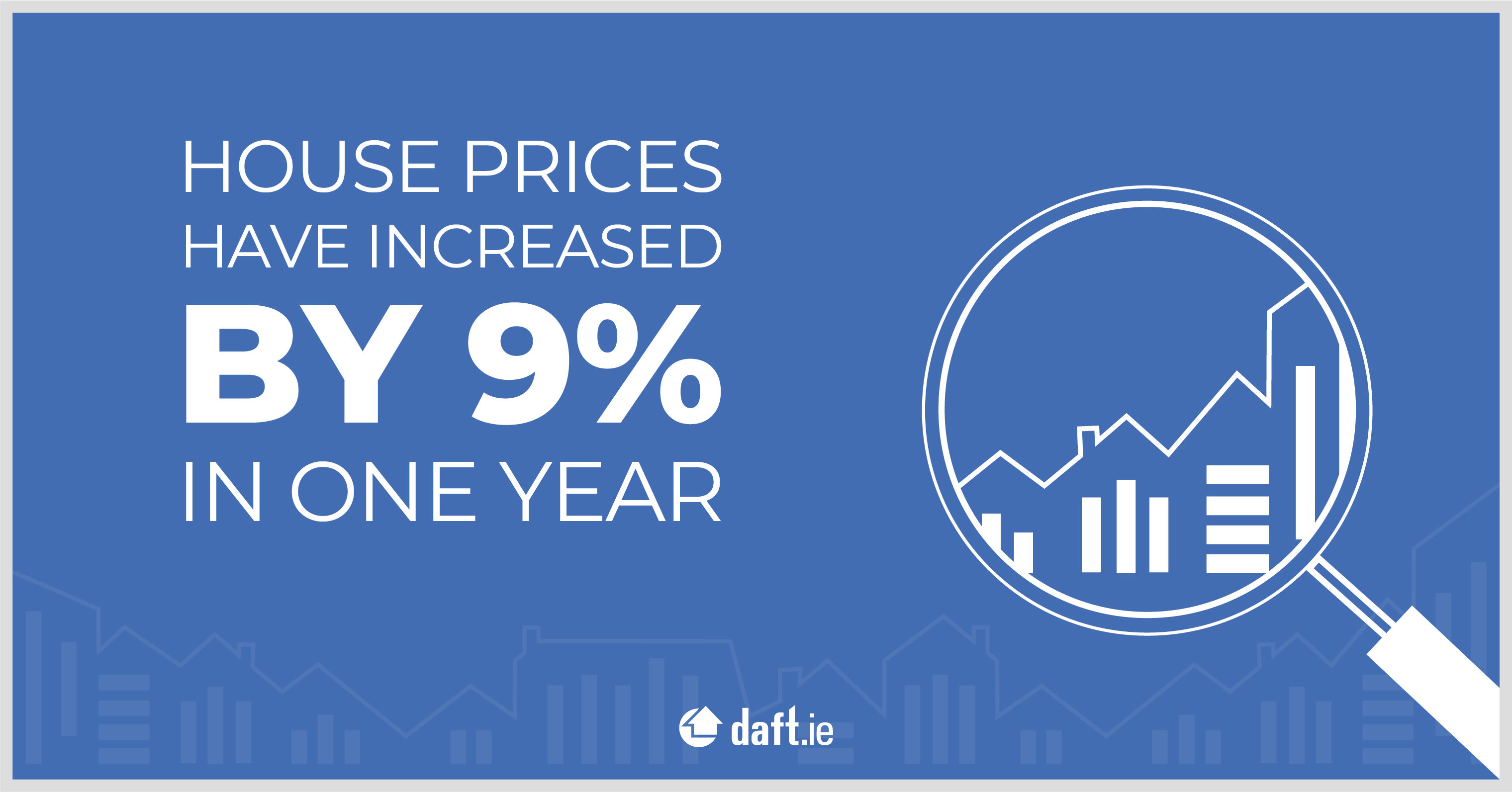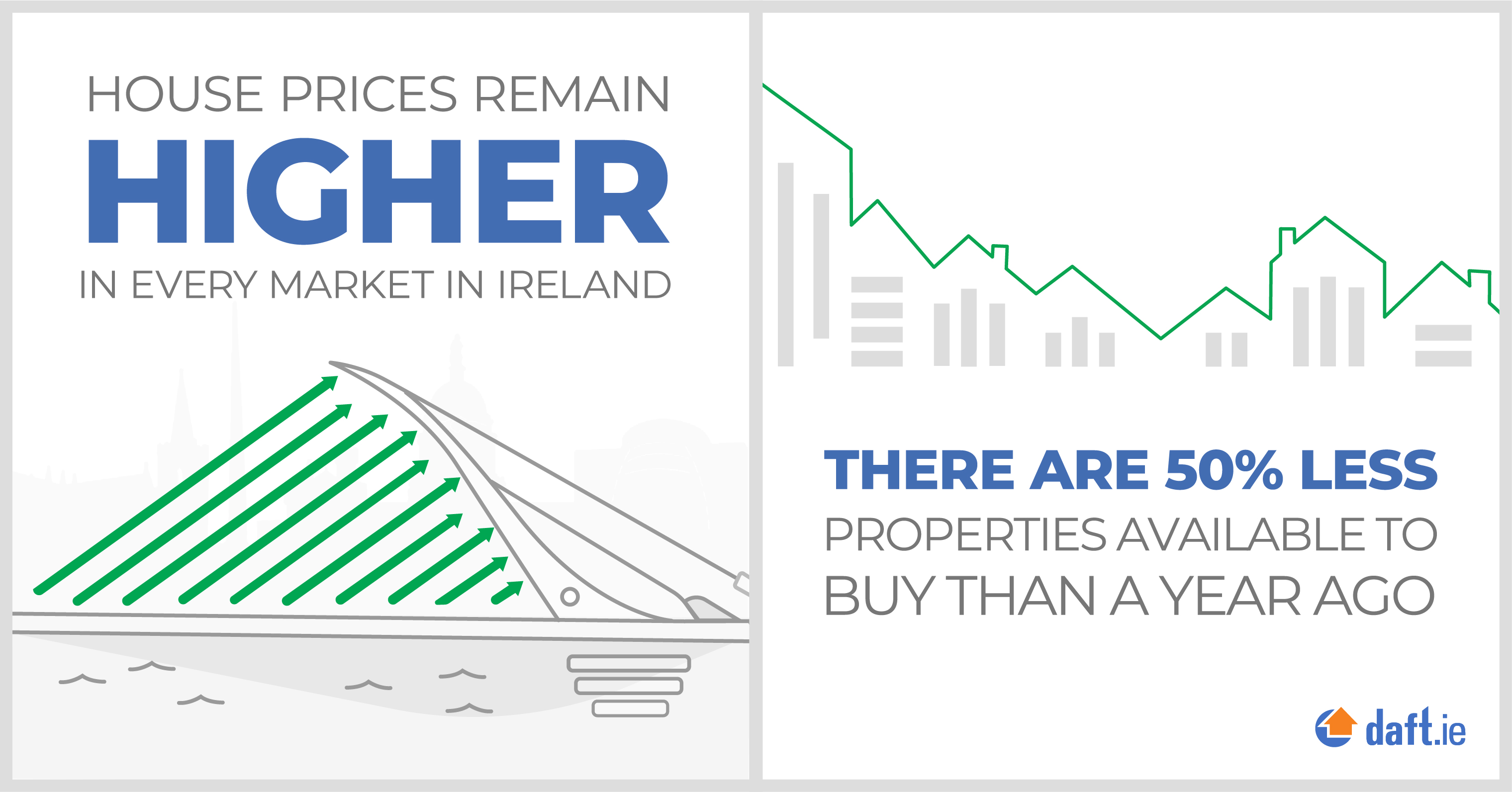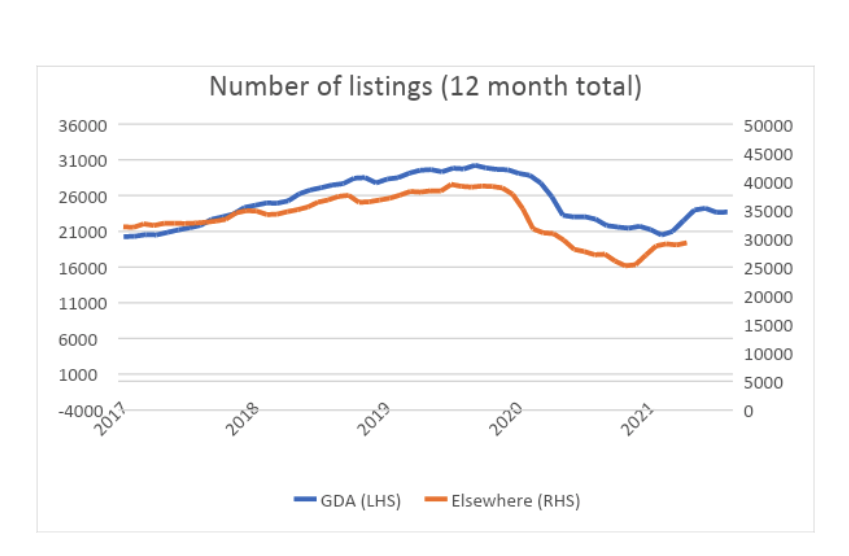Irish House Price Report Q3 2021 | Daft.ie
Daft Reports
- Ronan Lyons (House Price, Q1 2024)
- Ronan Lyons (Rental Price, Q4 2023)
- Ronan Lyons (House Price, Q4 2023)
- Ronan Lyons (Rental Price, Q3 2023)
- Ronan Lyons (House Price, Q3 2023)
- Ronan Lyons (Rental Price, Q2 2023)
- Ronan Lyons (House Price, Q2 2023)
- Ronan Lyons (Rental Price, Q1 2023)
- Ronan Lyons (House Price, Q1 2023)
- Ronan Lyons (Rental Price, Q4 2022)
- Ronan Lyons (House Price, Q4 2022)
- Ronan Lyons (Rental Price, Q3 2022)
- Ronan Lyons (House Price, Q3 2022)
- Ronan Lyons (Rental Price, Q2 2022)
- Ronan Lyons (House Price, Q2 2022)
- Ronan Lyons (Rental Price, Q1 2022)
- Ronan Lyons (House Price, Q1 2022)
- Ronan Lyons (Rental, Q4 2021)
- Ronan Lyons (House Price, Q4 2021)
- Ronan Lyons (Rental, Q3 2021)
- Ronan Lyons (House Price, Q3 2021)
- Ronan Lyons (Rental, Q2 2021)
- Ronan Lyons (House Price, Q2 2021)
- Ronan Lyons (Rental, Q1 2021)
- Ronan Lyons (House Price, Q1 2021)
- Ronan Lyons (Rental, Q4 2020)
- Ronan Lyons (House Price, Q4 2020)
- Ronan Lyons (Wealth, H2 2020)
- Ronan Lyons (Rental, Q3 2020)
- Ronan Lyons (House Price, Q3 2020)
- Ronan Lyons (Housing, July 2020)
- Ronan Lyons (Housing, June 2020)
- Ronan Lyons (Housing, May 2020)
- Ronan Lyons (Rental, Q1 2020)
- Ronan Lyons (House Price, Q1 2020)
- Ronan Lyons (Rental, Q4 2019)
- Ronan Lyons (House Price, Q4 2019)
- Ronan Lyons (Wealth, H2 2019)
- Ronan Lyons (Rental, Q3 2019)
- Ronan Lyons (House Price, Q3 2019)
- Pierre Yimbog (Rental, Q2 2019)
- Ronan Lyons (House Price, Q2 2019)
- Ronan Lyons (Wealth, H1 2019)
- Ronan Lyons (Rental, Q1 2019)
- Ronan Lyons (House Price, Q1 2019)
- Ronan Lyons (Rental, Q4 2018)
- Ronan Lyons (House Price, Q4 2018)
- Ronan Lyons (Wealth, H2 2018)
- Ronan Lyons (Rental, Q3 2018)
- Ronan Lyons (House Price, Q3 2018)
- Shane De Rís (Rental, Q2 2018)
- Ronan Lyons (House Price, Q2 2018)
- Ronan Lyons (Wealth, 2018)
- Ronan Lyons (Rental, Q1 2018)
- Ronan Lyons (House Price, Q1 2018)
- Ronan Lyons (Rental, Q4 2017)
- Ronan Lyons (House Price, Q4 2017)
- Ronan Lyons (Rental, Q3 2017)
- Ronan Lyons (House Price, Q3 2017)
- Katie Ascough (Rental, Q2 2017)
- Ronan Lyons (Wealth, 2017)
- Ronan Lyons (House Price, Q2 2017)
- Ronan Lyons (Rental, Q1 2017)
- Ronan Lyons (House Price, Q1 2017)
- Ronan Lyons (Rental, Q4 2016)
- Ronan Lyons (House Price, Q4 2016)
- Ronan Lyons (Rental, Q3 2016)
- Ronan Lyons (House Price, Q3 2016)
- Ronan Lyons (School Report, 2016)
- Conor Viscardi (Rental, Q2 2016)
- Ronan Lyons (Rail Report, 2016)
- Ronan Lyons (House Price, Q2 2016)
- Ronan Lyons (Rental, Q1 2016)
- Ronan Lyons (House Price, Q1 2016)
- Ronan Lyons (Rental, Q4 2015)
- Ronan Lyons (House Price, Q4 2015)
- Ronan Lyons (Rental, Q3 2015)
- Ronan Lyons (House Price, Q3 2015)
- Marcus O'Halloran (Rental, Q2 2015)
- Ronan Lyons (House Price, Q2 2015)
- Ronan Lyons (Rental, Q1 2015)
- Ronan Lyons (House Price, Q1 2015)
- Ronan Lyons (Rental, Q4 2014)
- Ronan Lyons (House Price, Q4 2014)
- Ronan Lyons (Rental, Q3 2014)
- Ronan Lyons (House Price, Q3 2014)
- Domhnall McGlacken-Byrne (Rental, Q2 2014)
- Ronan Lyons (House Price, Q2 2014)
- Ronan Lyons (Rental, Q1 2014)
- Ronan Lyons (House Price, Q1 2014)
- Ronan Lyons (Rental, Q4 2013)
- Ronan Lyons (House Price, Q4 2013)
- Ronan Lyons (Rental, Q3 2013)
- Ronan Lyons (House Price, Q3 2013)
- Ronan Lyons (Rental, Q2 2013)
- Ronan Lyons (House Price, Q2 2013)
- Ronan Lyons (Rental, Q1 2013)
- Ronan Lyons (House Price, Q1 2013)
- Ronan Lyons (Rental, Q4 2012)
- Ronan Lyons (House Price, Q4 2012)
- Lorcan Sirr (Rental, Q3 2012)
- Padraic Kenna (House Price, Q3 2012)
- John Logue (Rental, Q2 2012)
- Ronan Lyons (House Price, Q2 2012)
- Barry O'Leary (Rental, Q1 2012)
- Seamus Coffey (House Price, Q1 2012)
- Joan Burton (Rental, Q4 2011)
- Ronan Lyons (House Price, Q4 2011)
- Philip O'Sullivan (Rental, Q3 2011)
- Sheila O'Flanagan (House Price, Q3 2011)
- Rachel Breslin (Rental, Q2 2011)
- Constantin Gurdgiev (House Price, Q2 2011)
- Cormac Lucey (Rental, Q1 2011)
- Eoin Fahy (House Price, Q1 2011)
- Lorcan Roche Kelly (Rental, Q4 2010)
- Ronan Lyons (House Price, Q4 2010)
- John Fitzgerald (Rental, Q3 2010)
- Patrick Koucheravy (House Price, Q3 2010)
- Gary Redmond (Rental, Q2 2010)
- Jim Power (House Price, Q2 2010)
- Jill Kerby (Rental, Q1 2010)
- Brian Lucey (House Price, Q1 2010)
- Michael Taft (Rental, Q4 2009)
- Alan McQuaid (House Price, Q4 2009)
- Dr. Charles J. Larkin (Rental, Q3 2009)
- Emer O'Siochru (House Price, Q3 2009)
- Ronan Lyons (Rental, Q2 2009)
- Oliver Gilvarry (House Price, Q2 2009)
- Brian Devine (Rental, Q1 2009)
- Dr. Liam Delaney (House Price, Q1 2009)
- Gerard O'Neill (Rental, Q4 2008)
- Ronan Lyons (House Price, Q4 2008)
- Dr. Stephen Kinsella (Rental, Q3 2008)
- Moore McDowell (House Price, Q3 2008)
- Shane Kelly (Rental, Q2 2008)
- Fergal O'Brien (House Price, Q2 2008)
- Eoin O'Sullivan (Rental, Q1 2008)
- Dermot O'Leary (House Price, Q1 2008)
- Dan O'Brien (Rental, Q4 2007)
- Frances Ruane (House Price, Q4 2007)
- John McCartney (Rental, Q3 2007)
- Ronnie O'Toole (House Price, Q3 2007)
- Ronan Lyons (Rental, Q2 2007)
- Constantin Gurdgiev (House Price, Q2 2007)
- Fintan McNamara (Rental, Q1 2007)
- Rossa White (House Price, Q1 2007)
- Geoff Tucker (Rental, Q4 2006)
- Damien Kiberd (House Price, Q4 2006)
- Pat McArdle (House Price, Q3 2006)
- Marc Coleman (House Price, Q2 2006)
- David Duffy (House Price, Q1 2006)
- Austin Hughes (House Price, Q4 2005)
- David McWilliams (House Price, Q2 2005)

27th Sep 2021
The end of the Covid spike?
As we look back over the last 18 months or so, since the first Covid outbreaks in Europe, in many ways 2020 was the year of rising pressure in relation to the pandemic, culminating ‐ at least in Ireland and some of its peers ‐ in a horrendous peak around January. This has left 2021 to be, so far, a year of steadily falling pressure, with vaccinations doing enough to offset the incredibly contagious delta variant of the disease.
That pattern, of rising and then falling pressure, is evident in the housing market too, the figures in this latest report confirm. Nationally, year-on-year inflation fell from 13.2% in the second quarter, its highest value since early 2015, to 9.1% in the third quarter ‐ still a very high rate of inflation but more in line with the 2014-2019 average. In Dublin, and in the four other major cities, the rate of inflation is now close to 5%. In Dublin, this represents the impact of the 0.8% fall in list prices in the third quarter of the year, ending a run of four successive quarters of increases.

In the other cities, while prices still rose in the third quarter (by 1.7% on average), the collapse in inflation from almost 14% to just 5.3%, on average, reflects the third quarter of 2020 falling out of the calculation. In 2020 Q3, list prices had jumped an extraordinary 9.8% in just three months ‐ the largest three-month increase on record, extending back to the start of 2006. Elsewhere in the country, inflation remains very elevated ‐ at almost 13% on average, year-on-year, and varying from 8% in Meath to 22% in Mayo ‐ but down from the mid-year spike of 16.8%.
The easing of extraordinary price pressures in the sales market reflects the easing of restrictions and the recovery of, in particular, the second-hand market for homes to buy. In general, over the past 18 months, the number of listings over a 12-month period has held up better in Dublin and its commuter counties than elsewhere.

Taking the five counties in the Greater Dublin Area (GDA), the total number of listings on Daft.ie had risen from 20,000 in the year to January 2017 to 30,000 in late 2019 ‐ before losing all those gains by early 2021, as Covid-19 brought the housing market to a halt. Since then, though, the number of listings in the capital and nearby has risen by about 20%, up to 24,000 in the 12 months to August, meaning there have been about one-sixth more listings in the year to August 2021 than in the same period five years previously.
Elsewhere in the country, the recovery in housing market liquidity had been less pronounced in the run-up to the pandemic to begin with. The number of listings did creep up between early 2017 and late 2019, but by less than one quarter, rather than a half. The fall off has been greater, too, with the 12-month total number of listings outside the GDA dropping from nearly 40,000 in late 2019 to just over 25,000 in early 2021. As a result, while the volume of Dublin listings is about one sixth above its level of five years ago, the volume elsewhere is nearly 10% lower. A summary of these trends is shown in the figure accompanying this commentary.

Despite the improvement in the number of properties coming on to the market, overall availability remains extraordinarily tight ‐ a testament to very strong demand for homes for sale in the country currently. The total number of homes for sale nationwide on September 1st was 12,675 ‐ up slightly from the March low of 11,919 but not much more than half of the pre-Covid average of 22,500 in 2019. Compared to the early 2010s, when there were more than 50,000 homes for sale around the country, it's a different market entirely.
With Ireland registering population growth and net migration even during the worst of Covid-19 pandemic, and with strong evidence of suppressed household formation, demand for housing is set to remain strong well past the short- and medium-term and into the middle of the century. Reasonable parameters for population, headship and obsolescence imply a need of roughly 50,000 new homes annually, for every year between 2016 and 2051. That is a need that transcends tenure modes ‐ in other words, the 50,000 new homes are across owner-occupied, private rental and social housing sectors.
To be on target for this, Ireland would have needed to have built 250,000 between 2016 and 2020. Instead, the country built fewer than 85,000. As the country emerges from the Covid-19 pandemic, the chronic and worsening housing shortage looms large economically and politically.

